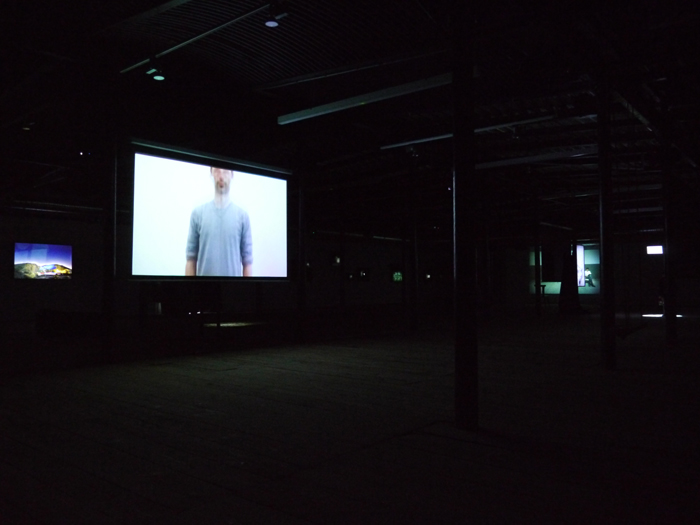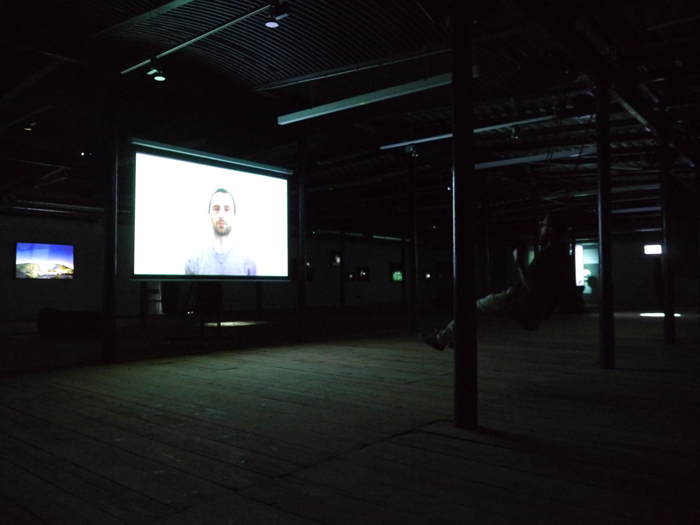

A PHP Error was encountered
Severity: Notice
Message: Undefined variable: galleryPhotos
Filename: subpages/work.php
Line Number: 64
Swing (distant intimates), 2014
video installation
In the work Swing I apply recording of an image created during swinging. The registered image is closely related to my physical features such as body weight, dynamics of motion. The image displays a figure of a motionless man in an undefined space. The image approaches him and withdraws in a pendulum-like movement. The work, however, is not composed of a registered image alone. Placing, in front of the projection, the same swing which was used to register the shown material offers the viewer an opportunity to attempt to synchronise their own motion with the effect of motion visible on the screen making the situation of the camera approaching and withdrawing seemingly copy their activity. Yet, the possibility of a complete synchronisation in this work is almost unattainable. It is possible only at some moments. Swing gives us for a moment an impression that our physical activities affect the image displayed in front of us. This illusion is disturbed when the image stops corresponding with the motion performed. Then disharmony becomes our companion. On the one hand we make a movement and on the other hand we see the effect of a movement, which differs from our expectations. Such situation alternately creates an illusion of cohesion/homogeneity of the physical reality with the screen reality and disturbs it. Swing reminds us of a situation when we are on a train and we see through the window a train on the other platform set off and we have an impression that our train is in motion although in reality it is stationary.
The structure of the work is based on the opposition of fiction and reality. The motion performed by the viewer, apart from making them closer or further from the screen, depending on the level of synchronization, draws us closer to perceive the image on the screen as real. Here the opposition of free will and determinism is exposed. Our activities seem to create reality but, in fact, it is us who tune in to it to sustain such illusion of influence.
In this work the work reception is conditional upon the manner of the recipient’s action. It is the motion of the viewer swinging on the swing that copies the movement of the camera displayed on the screen straight ahead. The situation of incompatibility of our movement with what we are looking at is a characteristic feature of a cinema, where a stationary viewer sees what the moving camera sees. In contact with this work the swing gives at times an illusion that the screen does not dominate.